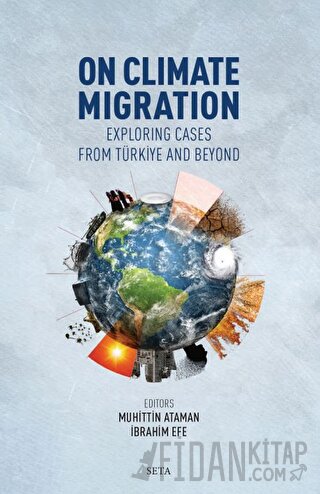
Climate change has become one of the primary drivers of human migration, with many observers predicting that its impact will outweigh all other man-made factors in the near future. While some natural disasters, such as earthquakes and floods, result in immediate and direct human displacements, climate change-related emergencies, such as drought and erosion, result in slow but steady migrations. As climate change increases the likelihood of natural disasters, the consequences will have far-reaching implications for local and cross-border displacements, as well as international policymaking. The edited volume combines two broad objectives. First, it intends to present an alarming and innovative perspective on climate change through case studies from around the world. Second, it will provide a new perspective on migration from the perspective of global and regional dynamics that force people to migrate. With a special emphasis on Türkiye’s climate change policy and its organizational capacity to meet new challenges that have emerged, especially after its successful response to the massive influx of Syrian refugees, the edited volume overall aims to inspire international organizations and governments to find long-term solutions to this dynamic process.
Climate change has become one of the primary drivers of human migration, with many observers predicting that its impact will outweigh all other man-made factors in the near future. While some natural disasters, such as earthquakes and floods, result in immediate and direct human displacements, climate change-related emergencies, such as drought and erosion, result in slow but steady migrations. As climate change increases the likelihood of natural disasters, the consequences will have far-reaching implications for local and cross-border displacements, as well as international policymaking. The edited volume combines two broad objectives. First, it intends to present an alarming and innovative perspective on climate change through case studies from around the world. Second, it will provide a new perspective on migration from the perspective of global and regional dynamics that force people to migrate. With a special emphasis on Türkiye’s climate change policy and its organizational capacity to meet new challenges that have emerged, especially after its successful response to the massive influx of Syrian refugees, the edited volume overall aims to inspire international organizations and governments to find long-term solutions to this dynamic process.




















